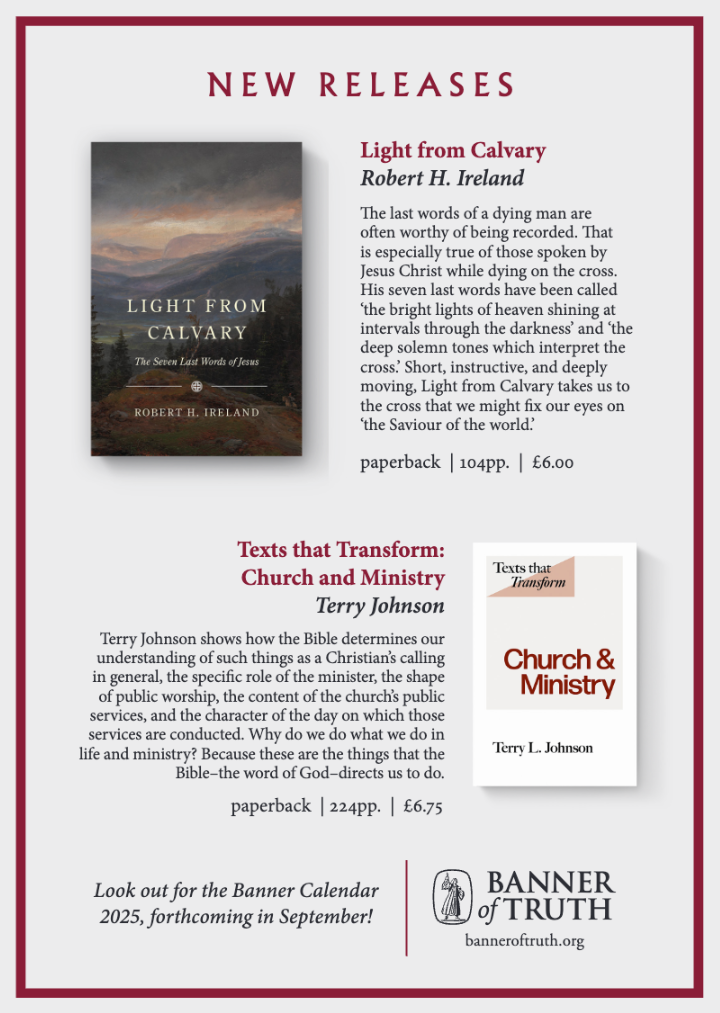Revival is a movement of God that, like the wind and its patterns, is a divine mystery. It was the error of Charles G. Finney to explain revival as a psychological phenomenon that could be ‘got up’ by human activity. Finney’s methodology focused on these preparations for revival. A biblical understanding of revivals must acknowledge that it is God himself who prepares his people for revival. The history of the church and the doctrine of the Holy Spirit demonstrate that there are several prerequisites for, and precursors of, revival. We can see how certain of these features emerged during the years that led up to the Cambuslang Awakening.
Theology
The first prerequisite is evangelical theology. The men who were used by God at Cambuslang had been influenced by the ‘Marrow Controversy’ twenty years earlier. The ‘Marrowmen’ revolted against a formalised view of the gospel in which faith and repentance were presented as the keeping of a new law. In this sense, law was preached to sinners (as a preparation to their hearing the gospel) rather than the gospel itself. By contrast, the Marrowmen emphasised the free offer of Christ to all men.
We hear their theology in the counsel offered by William McCulloch to Catherine Jackson in his manse. Weeping bitterly, she declared that her sins were so many that Christ would not receive her. The story continues: ‘But he will, said the minister. If you be willing to come to him and accept of him: I can assure you in his name, he is willing to accept of you. Whatever you have been, whatever you have done, come to him and he will not reject you. When there is a willingness on both sides – he is willing, and you, I think, are willing – what should hinder the concluding of the blessed Bargain, the match between Christ and your soul?’
Prayer
The second prerequisite is prayer. For many years societies for prayer had been springing up amongst the people of God. This has long been a feature of God’s renewing work in reformation and covenanting times. Under the leadership of the Erskine brothers such societies sprang up amongst the seceders. Many who remained within the Church of Scotland also formed societies for prayer and godly fellowship. Arthur Fawcett writes of these societies: ‘Many men and women, from every rank of life, questing after personal holiness and endeavouring to watch one another’s souls, did much to warm the spiritual atmosphere of the land. They were in truth preparing a highway for the Lord’.
Some parish ministers encouraged the prayer societies, but others opposed them. McCulloch encouraged the societies for prayer throughout his parish; recording later that ‘In 1731, when I came to this parish there were 3 of these meetings in it. In 1742, they increased to a dozen or more’. In January 1742 (six weeks before revival broke out) a General Meeting of all the societies in the parish was held, and greatly stirred the expectations of the people.
Sharing
A further common feature and precursor of revival is the sharing of news concerning God’s workings elsewhere. As we have already seen, McCulloch published The Weekly History to spread news of revival in other places. He was captivated by news of what God had done in Wales under the ministries of Howell Harris and Daniel Rowland; in Freehold, New Jersey, under the ministry of John Tennent; in Northampton under the ministry of Jonathan Edwards; and among the Kingswood miners in 1739, when George Whitefield went into the open air to preach and many were converted.
McCulloch wrote to these men whom God had used so remarkably and received their reports with great enthusiasm. After Sabbath evening service he ‘frequently read to his hearers missives, attestations and journals which he had received from his correspondents, giving an account of the conversions which had taken place in different parts of New England under Mr Whitefield’s ministry’. One parishioner wrote, ‘I was greatly affected at the thought that so many were getting food, and I was getting none’. The praying people of Cambuslang were being trained to expect great things from God.
Preaching
A further precursor of revival is preaching calculated to awaken sinners. Two successive emphases marked the preaching of William McCulloch from the Cambuslang pulpit. At the beginning of his ministry he dealt much with the theme of ‘Conversion – the human response to the gospel’. Ten years later he focused on ‘Regeneration – the divine initiative of the gospel’.
A narrative of the revival drawn up in 1742 recorded that ‘The minister in his ordinary course of sermon, for nearly a twelve month before this work began, had been preaching on those subjects which tend most directly to explain the nature, and prove the necessity of regeneration, according to the different lights in which that important matter is represented in Holy Scripture’. Whitefield’s visit in the summer of 1741 confirmed McCulloch in this emphasis – he was ‘preaching much on regeneration’. The accounts of his congregation attest this. John Aicken described a sermon on John 3:5: ‘That was the first time I heard the call of the gospel come home to me in particular. And that day I thought, either the minister or I was changed’.
Natural events
God even uses the events of nature to awaken sinners to their need. On 13 January 1739 an eclipse of the sun was followed by a ferocious storm. The following Sabbath McCulloch preached on Psalm 148:8: ‘Fire and hail, snow and vapours, stormy wind fulfilling His word’. He asked, ‘Will neither the voice of God in the tempests of the air, nor in the threatenings of devouring fire and everlasting burnings, awaken you?’ After the storm came a cold and very hungry winter. McCulloch took these events to be cumulative evidences of divine displeasure and discipline.







